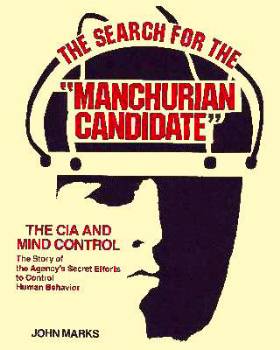
(c)1979 by John Marks
Published by Times Books
ISBN 0-8129-0773-6

 |
| The Search for the Manchurian Candidate (c)1979 by John Marks Published by Times Books ISBN 0-8129-0773-6 |
Contents
PART I
ORIGINS OF MIND-CONTROL RESEARCH1. WORLD WAR II
2. COLD WAR ON THE MIND
3. THE PROFESSOR AND THE "A" TREATMENTPART II
INTELLIGENCE OR "WITCHES POTIONS"4. LSD
5. CONCERNING THE CASE OF DR. FRANK OLSEN
6. THEM UNWITTING: THE SAFEHOUSES
7. MUSHROOMS TO COUNTERCULTUREPART III
SPELLS—ELECTRODES AND HYPNOSIS8. BRAINWASHING
9. HUMAN ECOLOGY
10. THE GITTINGER ASSESSMENT SYSTEM
11. HYPNOSISPART IV
CONCLUSIONS12. THE SEARCH FOR THE TRUTH
| John Marks Washington, D.C. October 26, 1978 |
Contents | Feedback | Search | DRCNet Library | Schaffer Library